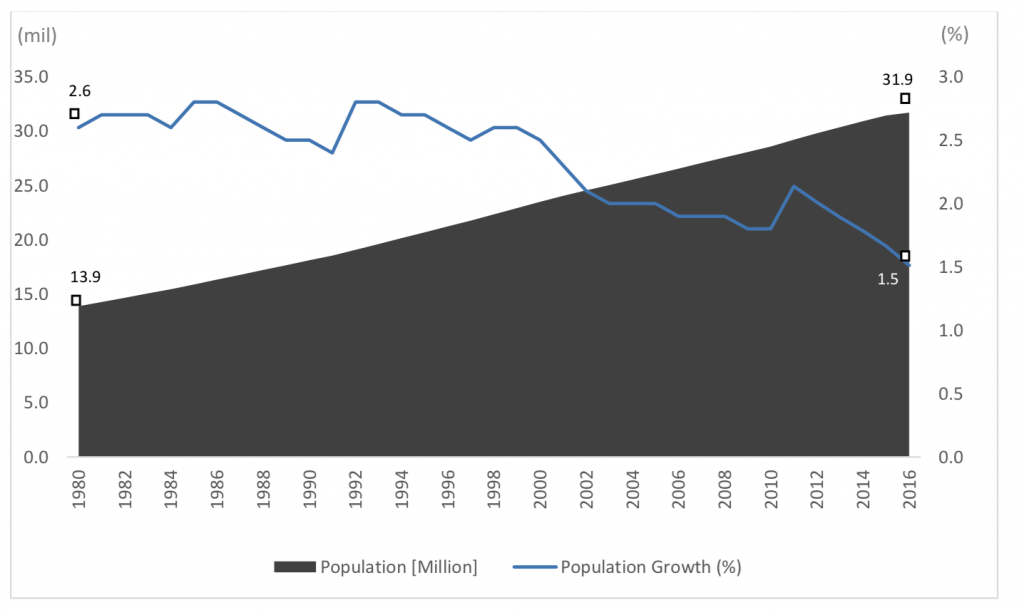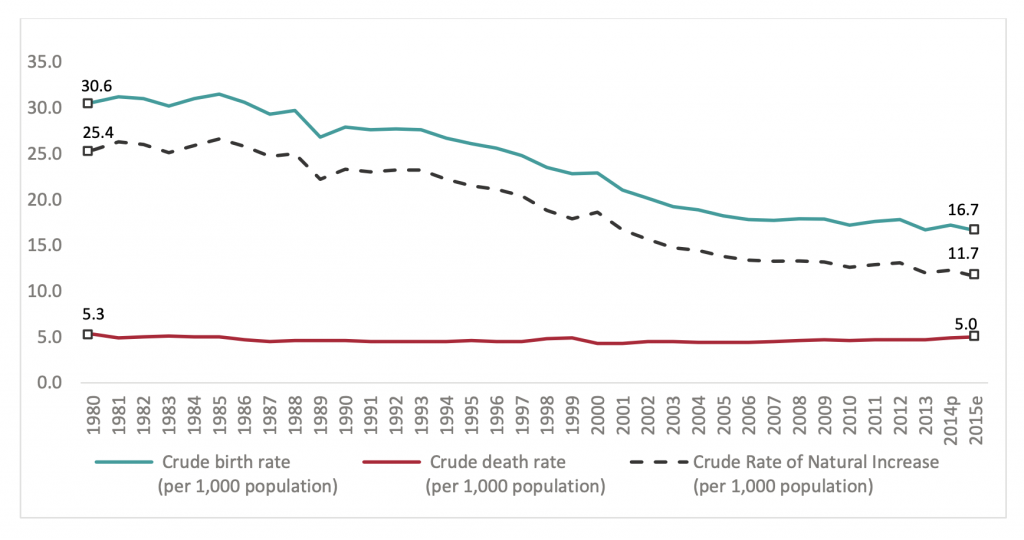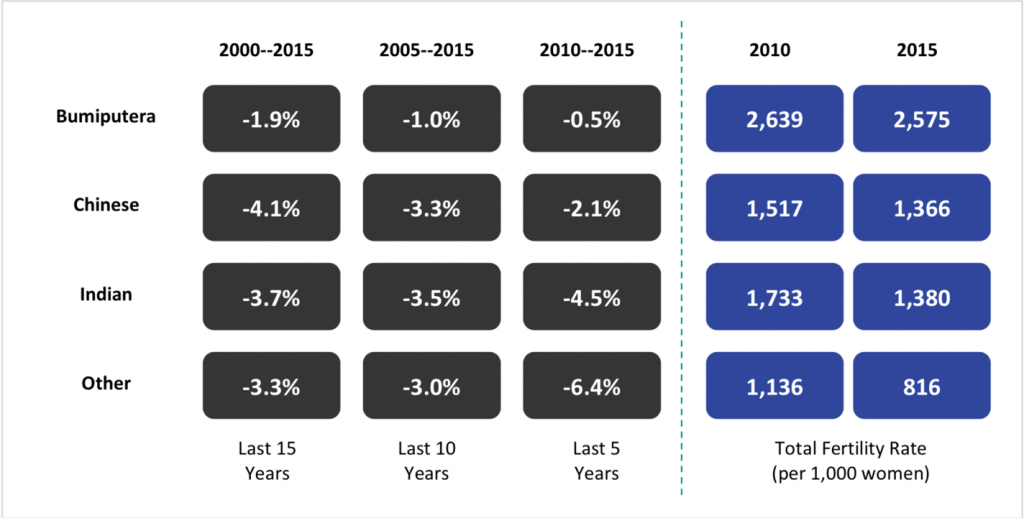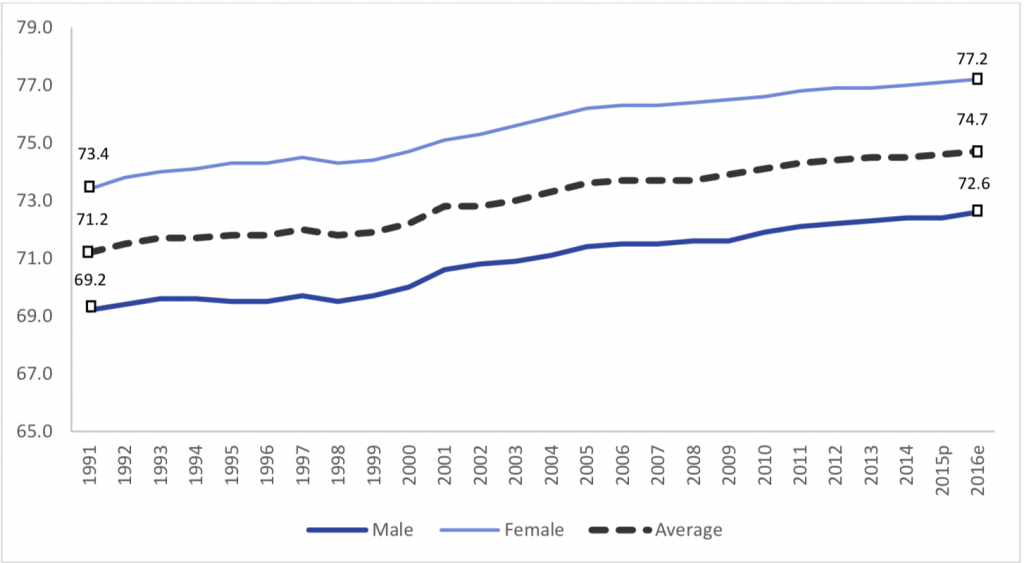Malaysia Population Research Hub


Population Size and Growth, Malaysia, 1980 – 2016
Source: DOSM Population Statistics
Malaysia has seen tremendous growth in the past three decades, fuelled by progressive social and economic development, and so has the size of its population. The population of Malaysia has more than doubled over the last 36 years from 13.9 million in 1980 to an estimated 31.9 million in 2016. Although the population has been increasing in size, the population growth rate has been slowing down. Population growth on a yearly basis has decreased from about 2.6% in 1980 to 1.5% in 2016. The slowdown comes as a result of a combination of public policy, rising education levels, globalization and modern lifestyles, and a shift in mindsets towards smaller-sized family norms.
Declining Natural Increase Caused by Declining Births

Crude Birth Rate, Crude Death Rate, and Natural Increase, Malaysia, 1980 – 2015
Source: DOSM Population Statistics
The slowing down of population growth is partly due to the decline in natural increase. From 1980 to 2015, the natural increase of Malaysia has decreased from 25.4 to 11.7 per 1,000 population. The decline in natural increase was solely due to the fact that the population has been experiencing fewer births over the decades, as the death rate has remained relatively constant in fact, experiencing slight improvement within the same time period. (From 1980 to 2015, the crude birth rate has declined from 30.6 to 16.7 per 1,000 population; crude death rate has declined slightly from 5.3 to 5.0 per 1,000 population within the same time period.)
Population Bearing Children Later and Fewer

TFR and ASFR, Malaysia
Source: DOSM Population Statistics
The decline in number of births occurs as women are bearing fewer children in their fertile lifetime, and also later in their fertile lifetime. On average, a woman in 1980 would bear 4 children over her fertile lifetime, whereas a woman today would bear 2 children, on average, over her fertile lifetime. (The TFR has declined from 4.0 in 1980 to 2.0 in 2015.) In addition, most women are giving birth between the age ranges of 25 to 34 today, compared to 20 to 29 just three to four decades ago.
However, the TFR decline has begun to slow down. From 1960 to 2010, the TFR declined at a rate of 2.1%, before shooting up temporarily to 3.1% from 2000 to 2010; however, from 2010 to 2015, the TFR decline has slowed down to just 1.3%. The slowdown in decline is primarily attributed to the slowdown in TFR decline among the Bumiputera ethnic groups, which make up more than 60% of the population, compared to the non-Bumiputera ethnic groups.

Rate of TFR decline, Malaysia, 2010-2015 compared to 1960-2010
Source: Ipsos Analysis, based on national TFR data

Malaysians are Living Longer

Malaysians are living longer, and can expect to live up to about 75 years at the time of birth, on average. (In 1991, the average life expectancy at birth was 71 years.) Women have a higher life expectancy at birth of about 77 years on average, compared to men who have a life expectancy at birth of about 73 years on average.
The increasing life expectancy at birth and decreasing TFR speeds up the process of ageing for any country, assuming that natural increase is still the main driver of population growth, and public policy remains neutral on using inward migration as a leverage for population growth. This is the case of Malaysia.1 Progressing at the current trend (latest published forecasted data: November 2016), Malaysia is expected to achieve ageing nation status within 12 years, i.e. by 2029.2 This is 6 years earlier than previously predicted.